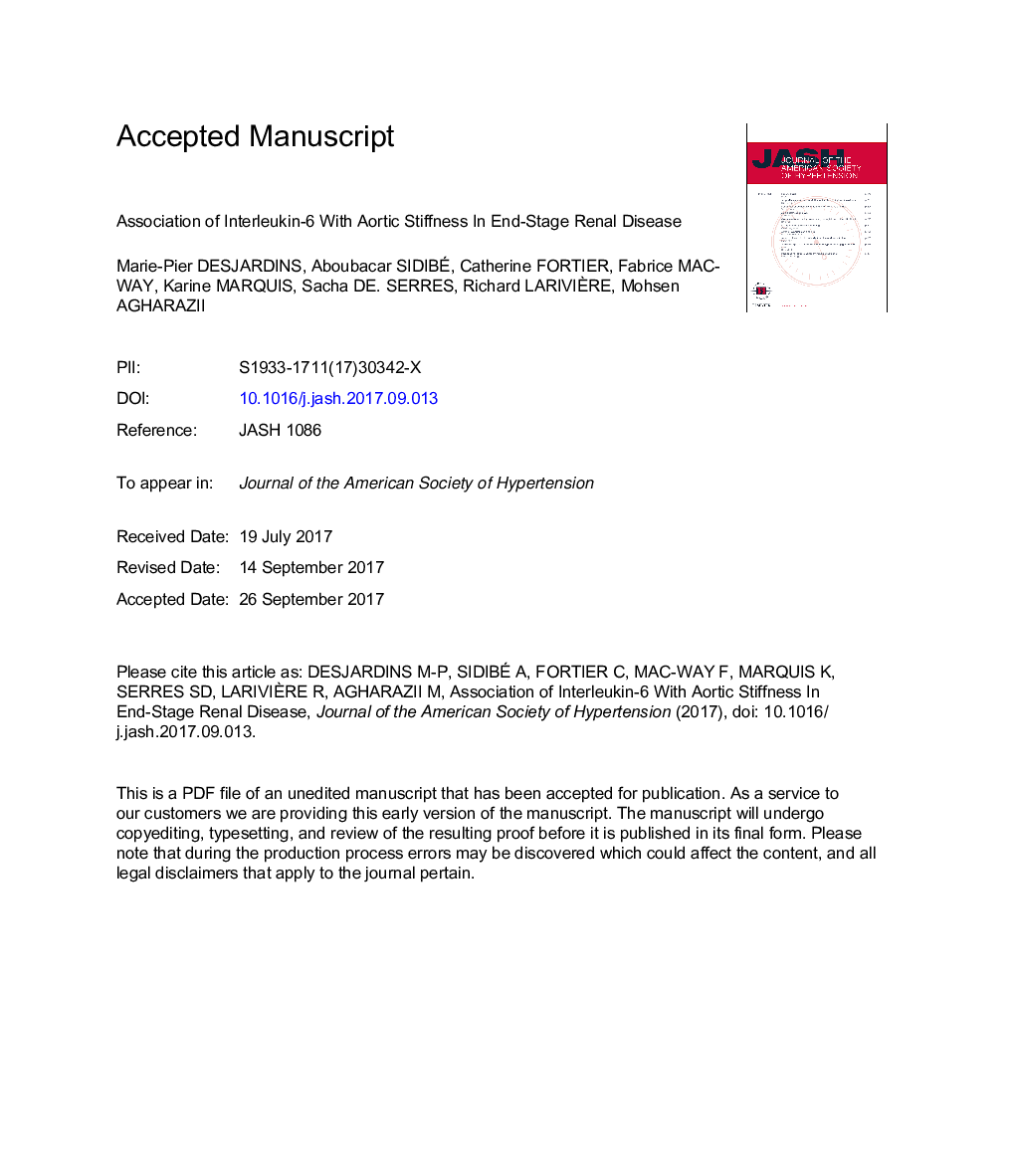| Article ID | Journal | Published Year | Pages | File Type |
|---|---|---|---|---|
| 8667506 | Journal of the American Society of Hypertension | 2018 | 25 Pages |
Abstract
Cardiovascular disease (CVD) is the leading cause of mortality in patients with chronic kidney disease (CKD). Aortic stiffness, a nontraditional risk factor, is associated with high rate of mortality in CKD. Using a CKD animal model with medial vascular calcification, we previously reported increased mRNA expression of interleukin-6 (IL-6), tumor necrosis factor (TNF), and interleukin-1β (IL-1β) in calcified aorta. The aim of the study was to investigate the association between IL-6, TNF, IL-1β, and aortic stiffness in end-stage renal disease patients. In a cross-sectional study, we enrolled 351 patients on dialysis. Aortic stiffness was assessed by carotid-femoral pulse wave velocity (cf-PWV), while central pulse pressure and augmentation index were assessed using generalized transfer function applied to the radial artery pressure wave form. Plasma IL-6, TNF, and IL-1β were measured by enzyme-linked immunosorbent assay. IL-6 was associated with cf-PWV adjusted for mean blood pressure (MBP) (standardized β = 0.270; P < .001). In a multivariate adjusted model for age, diabetes, hypertension, CVD, and MBP, IL-6 was still associated with cf-PWV (standardized β = 0.096; P = .026). The impact of age, diabetes, and CVD on cf-PWV was partially mediated by IL-6 in a mediation analysis. However, there were no associations between TNF, IL-1β, and aortic stiffness. While IL-6 was associated with augmentation index (standardized β = 0.224; P < .001) and central pulse pressure (standardized β = 0.162; P = .001) when adjusted for MBP and heart rate, this relationship was not significant after adjusting for potential confounders.This study suggests a potential role of IL-6 for CKD-related aortic stiffness.
Related Topics
Life Sciences
Neuroscience
Endocrine and Autonomic Systems
Authors
Marie-Pier Desjardins, Aboubacar MSc, Catherine MSc, Fabrice MD, Karine PhD, Sacha MD, Richard PhD, Mohsen MD,
